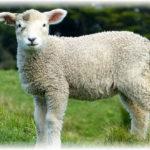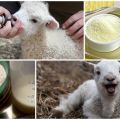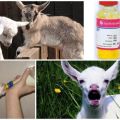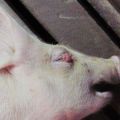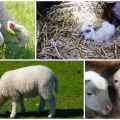The causative agent and symptoms of anaerobic lamb dysentery, treatment and consequences
Anaerobic dysentery of newborn lambs is bloody diarrhea that affects immature cubs. This dangerous infectious disease is caused by bacteria, which can even be carried by healthy-looking adult sheep. Microorganisms live and multiply in the intestines of the lamb, lead to the formation of ulcers on the mucous membranes, their toxins easily penetrate the bloodstream and cause general intoxication and lightning-fast death of animals.
Causative agent and description of the disease
Anaerobic dysentery or, as they say in Latin, Dysenteria anaerobica agnorum, is an infectious disease caused by dangerous microorganisms. The causative agent of the disease is the Cl bacteria. Perfringens type B. The infection enters the body of newborn animals, usually through the mother's nipples soiled with infected manure.
Bacteria can safely live in the intestines of adult and healthy-looking sheep and be excreted with feces, while contaminating the litter and the entire territory of the barn, sheepfold. These microorganisms are spore-forming microbes. Spore forms can be found not only in manure, but also in the ground, where they retain their viability for up to four years, despite seasonal temperature fluctuations. Bacteria are killed only by 5% creolin, lime solution, sodium hydroxide, carbolic acid and alcohol.
Dysentery affects young lambs in the first days after birth. True, only individuals with weakened immunity are sick with it. This happens if pregnant ewes received feed poor in vitamins and minerals. According to the statistics described in many presentations and scientific papers, 7 out of 10 newborns were sick with dysentery before, and 3-5 individuals died.
They did not even have time to cope with this disease. After all, the infection struck lambs in the first 3 days after birth. In pups after 6 days, dysentery was recorded less frequently. Affected lambs developed diarrhea with blood, intoxication, and dehydration. It is known that microbes take 5-6 hours to begin their destructive activity in the body.

Today, the infection affects lambs from dysfunctional farms. This usually occurs in the spring, when the young are born from females weakened by poor feeding. Adverse conditions of detention can provoke the disease. The infection affects lambs that are kept on dirty bedding, damp, cold and crowded.
Symptoms and clinical signs
Anaerobic dysentery is easily identified by its characteristic symptoms. The disease usually develops quickly and is acute. Dysentery is primarily a foul-smelling diarrhea. At the very beginning, the stool is thin, greenish or yellow-brown in color.Subsequently, they become thick and dark, with impurities of blood and mucus. The reason for this condition is the vital activity of dangerous microbes.
Once bacteria enter the body of newborn animals, they begin to multiply rapidly, releasing toxic substances.
Ulcers appear on the intestinal mucosa. They bleed, causing the entire contents to turn red. Being absorbed into the bloodstream, toxins also poison the body of small lambs, causing acute toxicosis. It is for this reason that sick individuals develop liquid and bloody diarrhea, and the wool near the anus becomes dirty and glued together due to frequent bowel movements.
The disease is also characterized by a disorder of the nervous system and a depressed state. Symptoms of anaerobic dysentery are also muscle cramps and impaired motor coordination. A sick animal may not respond to sounds, stand all day, bent over and sucking in its stomach, and then fall on its side. His body temperature rises to 40-43 degrees, in addition, his pulse and respiration become more frequent. The disease can last for several hours or one to three days and end in the death of sick lambs.
True, there is still a subacute form of dysentery. For 3 weeks, the animal can vilify. In this case, the symptoms are as follows: the patient lies most of the time, his condition is depressed, his appetite is poor. The lamb looks very emaciated due to the constant dehydration of the body; instead of diarrhea, there are thick stools interspersed with blood and mucus. Subsequently, he may die due to exhaustion.
Diagnostics
Anaerobic dysentery is diagnosed based on the clinical picture, as well as the results of laboratory tests. The disease affects only newborn lambs. Older sheep may have similar symptoms, but indicate salmonellosis or coccidiosis. Blood and stool tests are needed to make a diagnosis. In case of mass death of lambs, a fresh corpse is sent to the laboratory. Usually, the blood, the state of the small intestine and other organs and systems of the deceased individual are examined.
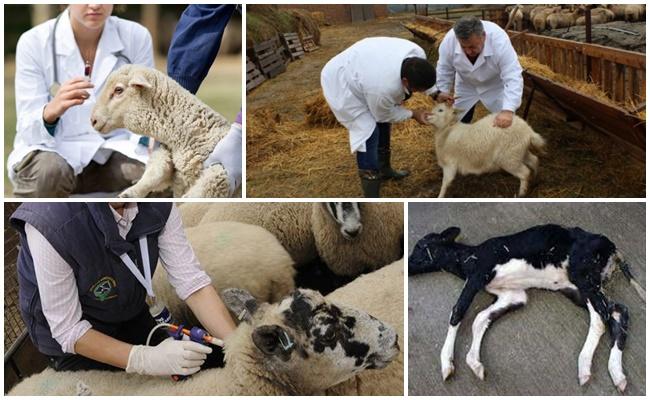
Treatment and prevention
Anaerobic dysentery is treated immediately after the onset of early symptoms (diarrhea). Prescribe antitoxic serum, sulfonamides (Norsulfazole), antibiotics (Syntomycin). At the initial stage, the disease is amenable to quick and effective treatment. Lambs who have recovered from dysentery and recovered form a strong immunity to this infection.
True, it is best to carry out preventive vaccination against dysentery. Cubs born from vaccinated ewes are immune to this type of bacteria. In dysfunctional farms, it is recommended to vaccinate all sheep, preferably at the age of three months. It is even possible to vaccinate pregnant queens one or three months before lambing.
For such a purpose, a special polyvalent GOA vaccine or anti-clostridial polyanatoxin is used. Immunization of newborn animals in the first hours of life with specific antitoxic serum is possible.
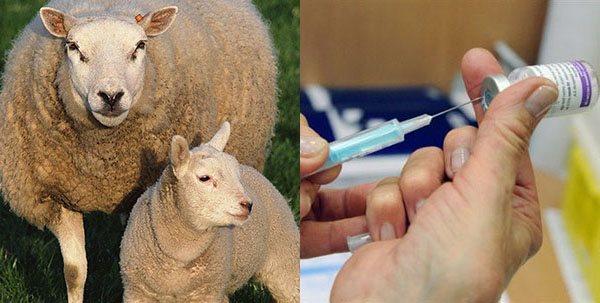
In addition to vaccination, it is recommended to provide female pregnant females with good care and adequate nutrition. Usually pregnancy occurs during the winter period. The room where the females are located should not be damp, cold or dirty. The young that are born must be kept clean and warm. In the room before lambing, it is necessary not only to replace the bedding, but also to disinfect all objects and even the floor.For this purpose, a solution of bleach or creolin is usually used.
Possible consequences
Anaerobic dysentery develops, as a rule, in weak lambs. If the disease is left untreated, five out of ten newborn sheep can die. The disease is dangerous for its lightning speed. Infection occurs quickly and infects the lamb's body in a matter of days.
Bacteria poison all organs and systems, lead to ulcers in the small intestine, severe bloody diarrhea. Toxic poisoning and dehydration result in the death of the lamb.
True, in 5 cases out of 10 newborn sheep recover even without treatment. But subsequently they are stunted and gain weight poorly. Recovered lambs may have problems with the gastrointestinal tract, decreased appetite. Negative consequences can be avoided if ewes are vaccinated against dysentery and feed them with high-quality feed, give pharmacy vitamins and minerals during pregnancy.


